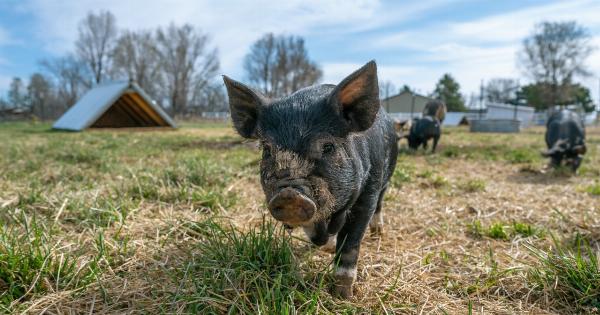The H1N1 virus is a strain of influenza virus that first emerged in Mexico in 2009. It caused a global pandemic that affected millions of people and led to many deaths.
Since then, the virus has continued to circulate and has caused outbreaks in various parts of the world. Today, the H1N1 virus is once again making headlines, as it continues to spread and cause illness.
What is the H1N1 virus?
The H1N1 virus, also known as swine flu, is a strain of influenza virus that is found in pigs. The virus is a type of influenza A virus, which means that it can infect humans as well as animals.
The H1N1 virus is particularly concerning because it can be easily transmitted between pigs and humans, and it can also be transmitted from person to person.
How is the H1N1 virus transmitted?
The H1N1 virus is transmitted through the air when an infected person coughs or sneezes. It can also be transmitted by touching a surface contaminated with the virus and then touching your mouth or nose.
The virus can survive on surfaces for several hours, making it easy to spread from one person to another.
What are the symptoms of H1N1?
The symptoms of H1N1 are similar to those of regular influenza. They include:.
- Fever
- Cough
- Sore throat
- Body aches
- Headache
- Fatigue
- Chills
- Diarrhea and vomiting (in some cases)
Who is at risk for H1N1?
Anyone can get H1N1, but some people are at higher risk for complications. These include:.
- Children under 5 years old
- Adults over 65 years old
- Pregnant women
- People with chronic medical conditions, such as asthma, diabetes, or heart disease
How can H1N1 be prevented?
The best way to prevent H1N1 is to get a flu vaccine. The vaccine is safe and effective, and it can reduce your risk of getting the virus or experiencing complications if you do get sick. Other ways to prevent the spread of H1N1 include:.
- Washing your hands frequently with soap and water
- Covering your mouth and nose when you cough or sneeze
- Staying home if you are sick
- Avoiding close contact with people who are sick
- Cleaning and disinfecting surfaces that may be contaminated with the virus
What is being done to contain H1N1?
When an outbreak of H1N1 occurs, health officials work quickly to contain it and prevent it from spreading. This may involve measures such as:.
- Isolating people who are sick
- Closing schools, businesses, and other public places where the virus may spread
- Early treatment with antiviral medication for people at high risk for complications
- Monitoring the spread of the virus and issuing public health alerts as necessary
Conclusion
The H1N1 virus is a serious public health threat that requires our attention and diligence.
By taking steps to prevent the spread of the virus and seeking treatment if we become sick, we can help protect ourselves and our communities from this potentially deadly illness.






























